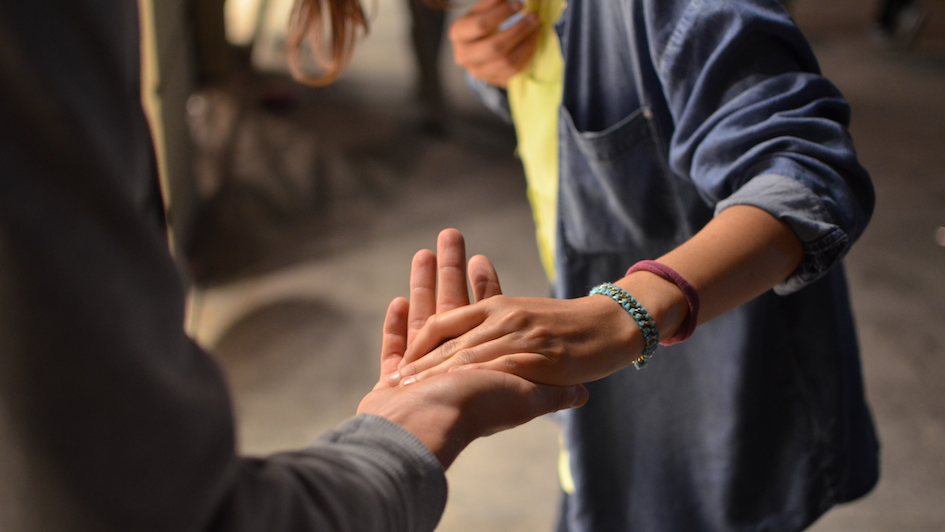
Nonprofits have compelling stories to tell. As a creative director, this is the reason we continue to do design work for nonprofits after so many years. We like to listen to these stories and figure out how to convey them in a way that can be easily understood and amplified. The end product we produce channels these ideas, allowing the audience to be emotionally engaged and to take action.
So how does one tell a compelling story through design? One can find stories everywhere, but the most compelling ones will move you emotionally. Every nonprofit we’ve worked with is driven by a cause, has shocking statistics to share, or has a sincere desire to change conditions for the better. Their brand stewards should ask these questions at the outset of any project:
- How do you make people care about your cause’s story?
- How can you make it easy for them to become engaged and mobilized?
- How to keep it simple and accessible?
Answering these questions with your internal marketing and external design teams will help capture initial ideas. Then step back and leave it to the designers to craft a solution.
There are a few key factors that guarantee the success and effectiveness of your design project. Clear communications and a willingness to collaborate should top your list. A few key steps to keep in mind as you’re planning your design project:
Planning
- Define objectives and stakeholders
- Get organized
- Have realistic expectations
- Write a solid creative brief
Production
- Engage a design firm
- Manage the review and approval process
- Launch the project
Define Objectives and Stakeholders
Everyone has a different definition of what “success” means. It’s important to include all stakeholders early in the creative process, allowing everyone the opportunity to influence the outcome of your project. Many organizations we have worked with have a board of trustees, making it non-elective to include everyone’s thoughts as you define the overall objectives. Informing your designer of potential challenges with specific stakeholders can often help them avoid problems getting buy-ins further down the road.
Get Organized
Most graphic designers are not content creators. At minimum your project will require copy and images, though recently we have found video/motion graphic content to be very effective in connecting with audiences, especially when amplified by social media campaigns. Regardless of the form of your content, make sure your designers understand what types of content they should expect to receive from you early in the planning process. This will help them plan their production process accordingly.
Have Realistic Expectations
Get your design/production budget and deadline cleared up front. You don’t want to design an oversized poster if all you can afford to print is a mini postcard. Nothing in this world is free, not even that tiny Facebook ad you have occasionally looked away from after a split second. Someone spent the time to craft this tiny ad, regardless of its “success” rate.
“A concise creative brief aligns everyone’s expectations from the outset…”
Write a Solid Creative Brief
A well-written creative brief helps everyone plan effectively. Depending on the project’s scale, you may be working with copywriters, researchers, designers, programmers, printers, marketers, and others. A concise creative brief aligns everyone’s expectations from the outset, so follow these rules:
- Be clear about project objectives and audience.
- Detail production specifications (i.e. size, format, page count, colors). If it’s a digital product, detail the technical requirements (i.e. responsive, CMS, SEO, target browsers).
- Explain the kind of content that will be provided (i.e. copy, images, videos) and how they will be supplied.
- Clarify the roles of everyone involved, including the stakeholders, creatives, and third party vendors.
- Draft a realistic schedule from project kickoff to final delivery.
- Clearly explain budget constraints and expectations.
If you’re not sure where to begin, ask an experienced designer to help draft the creative brief.
” … referrals still prove to be the best way to connect with potential collaborators because it is based on trust.”
Engage a Design Firm
With a creative brief and content plan in hand, you are ready for a kickoff meeting with a design firm. Seasoned design firms can digest and provide recommendations based on your initial conversation and help fill in any gaps in your project plan from creative and production standpoints.
If you’re not sure where to look for design firms that fits your project requirements, there are many resources online. Fortunately, most of our non-profit clients were referred by existing and past clients — for us, referrals still prove to be the best way to connect with potential collaborators because it is based on trust.
Manage the Review and Approval Process
It’s important to make sure your designer can maintain a singular channel of communication with your organization. Usually this task is handled by the Communications Director, who can ensure that the following are achieved:
- Organize internal feedbacks into bite-sized, non-conflicting comments for the designer.
- Collaborate with the designer to allow for a certain degree of creative interpretation by being not too prescriptive when providing feedbacks. Graphic designers are excellent problem solvers and should be given a chance to solve problems instead of being told how to.
- Proofread and fact check the content. Some photos, illustrations, and video content may need licensing clearance as well.
- Stick to the agreed upon schedule (but if you find you are falling behind, adjust it diligently).
- If your project is a digital product, make sure to do extensive user testing prior to the public launch.
- If your project is printed and tangible, make sure there’s ample time for printing/production and delivery/installation in space.
Last Words
Nothing is more rewarding than seeing your project come to fruition, especially when it’s well-designed and well-received. But at the end of the day, a streamlined creative process means you can spend more time to focus on achieving your organization’s mission.